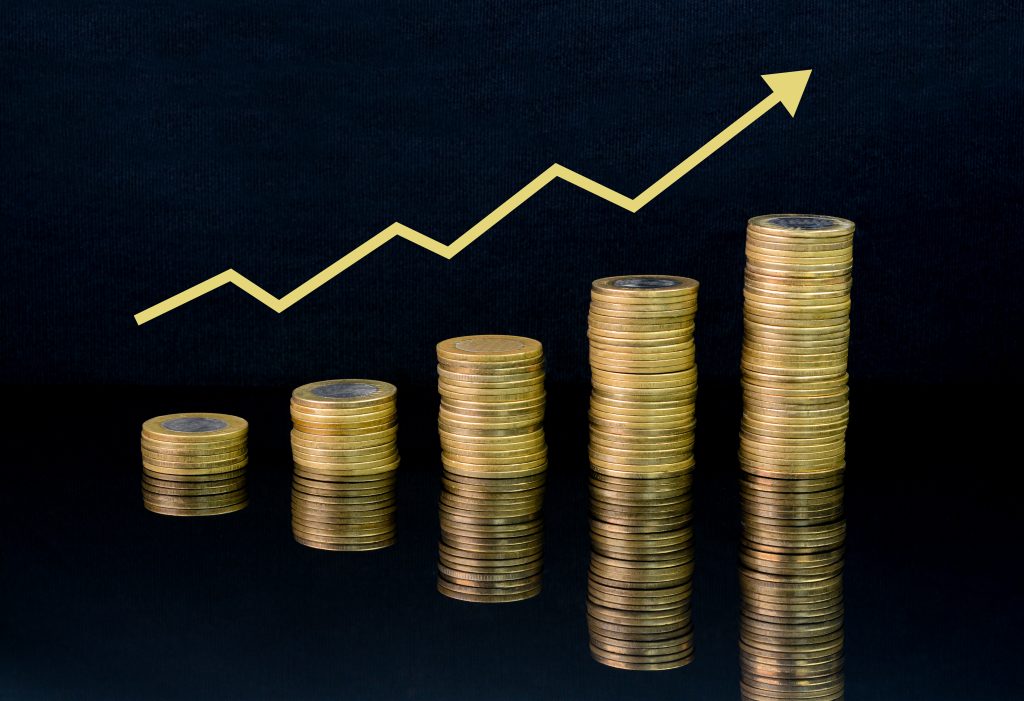Trading the Gold Market Amid the Latest Surge in Prices
Gold prices have been moving higher in recent days as lingering concerns over the banking crisis and persistently high inflation triggered strong demand in the precious metals sector

Considering the recent problems in the U.S. banking sector, it’s no great surprise that alternative stores of value have risen in value in recent weeks.
Gold, for example, is now trading just shy of its all-time high. Today, gold trades at roughly $2,055/ounce, while the all-time closing high in gold is about $2,070/ounce.
Gold has historically performed well during periods of economic instability because many market participants view it as a safe haven and pile into it when fear enters the financial markets. This is typically referred to as a “flight to safety.”
That was undoubtedly the case in March this year when a crisis of confidence developed in the U.S. banking system and forced many investors and traders to consider alternative places to park capital. That same scenario played out in 2020 during the onset of the COVID-19 pandemic.
This time around, however, interest in the precious metals sector is arguably more acute. That’s because there are plenty of anxious bank depositors that are now considering gold as a place to park cash, as opposed to just investors and traders.
In that regard, a crisis of confidence in the banking system is somewhat unique because it affects a larger number of American households.
Case in point, the Federal Deposit Insurance Corporation (FDIC) issued a report in 2022 that indicated roughly 95.5% of American adults have a bank account. In comparison, only about 55% of Americans own marketable securities such as stocks, ETFs and bonds.
As such, a crisis of confidence in the banking sector theoretically affects more Americans, as compared to a correction in the financial markets. For this reason, it’s almost assured that any further negative developments in the banking sector would trigger another leg up in the gold market, as well as a fresh all-time high in this well-known global asset.
The Silicon Valley Bank implosion served as an important reminder that financial institutions aren’t infallible. They can be mismanaged, like any other business, which can result in a bank failure. In the case of Silicon Valley Bank and Signature Bank, government regulators elected to make all depositors whole—even those holding more cash than what’s normally covered by FDIC insurance.
However, there’s no guarantee that all deposits will be covered in the case of another bank failure. Last week, the CEO of J.P. Morgan Chase warned that the current crisis isn’t yet over, in his opinion.
Recent performance in one of the best-known regional banking ETFs—the SPDR S&P 500 Regional Banking ETF (KRE)—appears to corroborate the notion that the current crisis isn’t over.
In the immediate aftermath of the recent bank failures, the SPDR S&P 500 Regional Banking ETF dropped by roughly 22% and was trading at roughly $45/share. However, since that time, the SPDR S&P 500 Regional Banking ETF has slowly crept lower and is currently trading at $42/share.
The SPDR S&P 500 Regional Banking ETF’s failed attempt to rebound is conspicuous, and even somewhat ominous, especially considering that no additional banks have gone belly-up in the interim.
Source: forbes.com
Another constructive factor for gold prices has been the recent decline in the value of the U.S. dollar.
A strong dollar theoretically makes gold cheaper, because fewer dollars are required to purchase it, all else being equal. On the other hand, a pullback in dollar strength can have the opposite effect, driving up the value of gold and other precious metals.
So far this year, the U.S. Dollar Index (DXY) is down roughly 3%, while gold is up about 13%.
Gold is just a few dollars away from hitting an all-time high
— Genevieve Roch-Decter, CFA (@GRDecter) April 13, 2023
Meanwhile, the US Dollar is down 3.30% in the last month pic.twitter.com/J7dFpj0Krl
Looking beyond gold’s value as a store of value and the recent decline in the dollar, another important factor has been persistently strong demand for gold from global central banks.
Last year, central bank purchases of gold totaled 1,336 tons, which was a new annual record. For reference, roughly 3,500 tons of gold are mined from the earth on an annual basis.
Throughout the entirety of history, it’s estimated that some 200,000 tons of gold have been extracted from the ground and current estimates suggest that global central banks now hold roughly 17.5% of all gold in circulation. That figure is expected to rise in the future.
Last year, a global survey of 57 global central banks revealed that 61% of those institutions intend to increase their gold reserves during the next 12 months. That survey was conducted by the World Gold Council, and also indicated that most central banks buy gold bars through the over-the-counter (OTC) market.
Taken together, the above suggests that the current market environment for gold is conducive to higher prices—especially if additional problems materialize in the American banking sector.
For more background on the precious metals markets, check out this new installment of In This Economy on the tastylive financial network. To follow everything moving the markets, tune into tastylive, weekdays from 7 a.m. to 4 p.m. CDT.
Sage Anderson is a pseudonym. He’s an experienced trader of equity derivatives and has managed volatility-based portfolios as a former prop trading firm employee. He’s not an employee of Luckbox, tastylive or any affiliated companies. Readers can direct questions about this blog or other trading-related subjects, to support@luckboxmagazine.com.




















